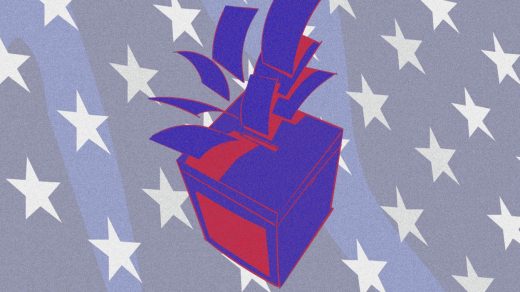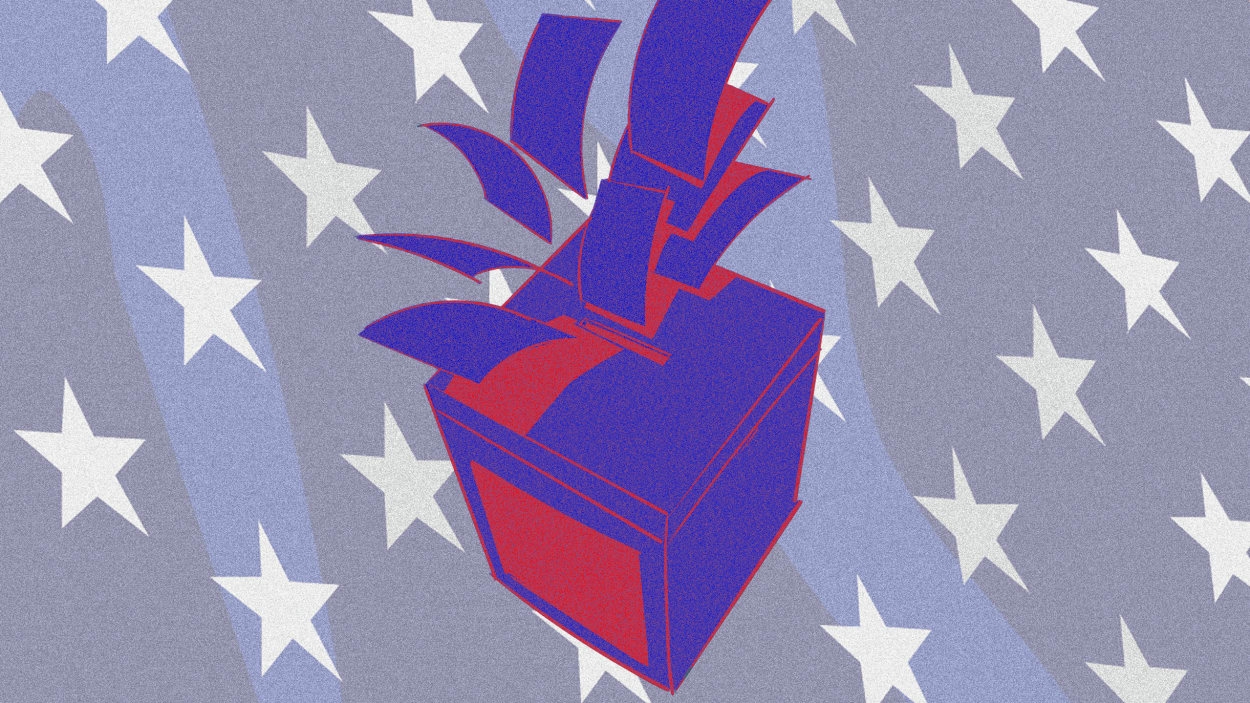Should Election Day be a federal holiday? Maybe not
The U.S. has one of the lowest voter turnout rates in the developed world, with reasons ranging from political apathy to voter suppression. But there’s also the sheer amount of time it can take to vote, particularly when many people have to squeeze it in before or after work.
Turnout is higher in many other democracies around the world where elections are held on weekends or on public holidays. This idea has been gaining steam in the U.S.: In the past few years, some companies have given employees paid time off, and some states have made Election Day a holiday. There’s also been a push to make it a federal holiday, an idea supported by President Biden.
But it’s not that clear-cut. Some experts think focusing on one single day could act as a free pass for states to ignore other steps that drive turnout, such as expanding in-person voting and increasing mail-in options. They argue that while a holiday may be symbolic, it still may not help those who have the hardest time making it to the polls, including low-income voters.
The arguments for a day off seem reasonable: Waiting in line to vote can take upwards of an hour, especially in poorer neighborhoods, and trying to vote during a work break is a luxury many employees don’t have. Giving people the day could also make access easier, such as by enabling carpooling. For these reasons, making Election Day a federal holiday has been included in several recent voting rights bills; Bernie Sanders introduced two bills in the Senate, both unsuccessfully, in 2014 and 2018.
In 14 states—including New York, Illinois, Virginia, and Louisiana—governors have signed laws making Election Day a holiday. (Although many were within the past election cycle, so they’re yet to see an impact on turnout.) Other states, like California, now require workplaces to give employees two hours off with pay at the beginning or end of a shift. Implementing this on a national level would be “an easy, straightforward way to increase voter participation,” says Andrea Hailey, CEO of Vote.org, the nation’s largest nonpartisan digital voter engagement organization, via email.
But Phil Keisling, a former secretary of state of Oregon, doesn’t agree with the premise. “I think it’s a classic example of what sounds like an attractive idea . . . that will actually have far less impact than its proponents want it to,” says Keisling, who is now chair of the National Vote at Home Institute, a nonprofit promoting vote-by-mail. “It’s not as if it’s a terrible idea, but I just don’t think it’s a particularly effective or thoughtful one.”
A Democrat, Keisling was Oregon’s secretary of state from 1991 to 1999, and was in charge of election administration. In 1998, Oregon became the first state to automatically send a ballot to every eligible voter two to three weeks before the election, which voters could mail back or deposit at a dropbox. “The business model is profoundly different,” he says. “It is the obligation of government to send the ballot to all active registered voters.” Oregon now only conducts elections in this way: Turnout is consistently high, and Keisling says it has made “the whole issue of an Election Day holiday actually irrelevant.”
That system is now the norm in eight states and D.C., meaning that one in five U.S. voters doesn’t have to worry about going to the polls at all. The 2020 election showed that the system worked; when the pandemic made it riskier to vote in person, 34 states set up mail-in infrastructure. Today, 27 states have no-excuse mail-in balloting, where any eligible voter can apply for an at-home ballot. And even though 11 states have made it harder to vote by mail, all but four—Alabama, Mississippi, New Hampshire, and Connecticut—offer early in-person voting, including on weekends. So, adding one more day off, Keisling says, probably wouldn’t change things much.
Vote.org’s Hailey agrees that states should increase early voting and vote-by-mail options, but she argues the holiday is just one more way to bolster turnout. Still, Keisling fears that focusing on making it a holiday could actually disincentivize states from establishing more effective voting infrastructure. “Not only would it do far less than we think it would, but it could also really undermine certain things,” he says, because states will think, “‘Oh, now we’ve taken care of it.’”
Certain groups lag in turnout, and a holiday may not help them. While office workers have a lot of flexibility already, lower-income workers in service and retail likely wouldn’t get the day off regardless, Keisling says. “I was a white collar worker for basically all my life, and I could quite easily arrange for two to three hours off in the middle of a Tuesday to go vote,” he says. And if services like schools, childcare, and public transport closed as well, that could make it even harder for people to vote.
With Juneteenth recently becoming a new federal holiday, some argue that another holiday would affect the economy. But others counter by suggesting it be merged it with Veterans’ Day, an apt way to celebrate democracy. “I’m not so churlish to think that it’s a terrible idea,” Keisling says. “I just think it has consequences a lot of people haven’t thought through.”
Perhaps his biggest issue is that the notion of “Election Day” isn’t the same for all Americans. Unlike parliamentary democracies, the U.S. has primaries throughout the calendar year. Frequently, in noncompetitive states and districts, these are more important than the general election because they effectively choose the winners. (This is even more problematic because primary turnout is far lower, at an average of 27%.) In these cases, “November’s just a formality,” Keisling says. “If you’re serious about making ‘Election Day’ a holiday,” he asks, “are we going to have 30 different election days off?”
For Keisling, significant shifts in turnout will only happen by expanding voting options, particularly mail-in ballots—a lesson that should have been learned during the pandemic. But only California and Nevada permanently adopted new mail-in systems. “We’re not thinking straight about the fact that the polling place itself has, in some ways, become the single voter-suppression device that remains.”
(17)



